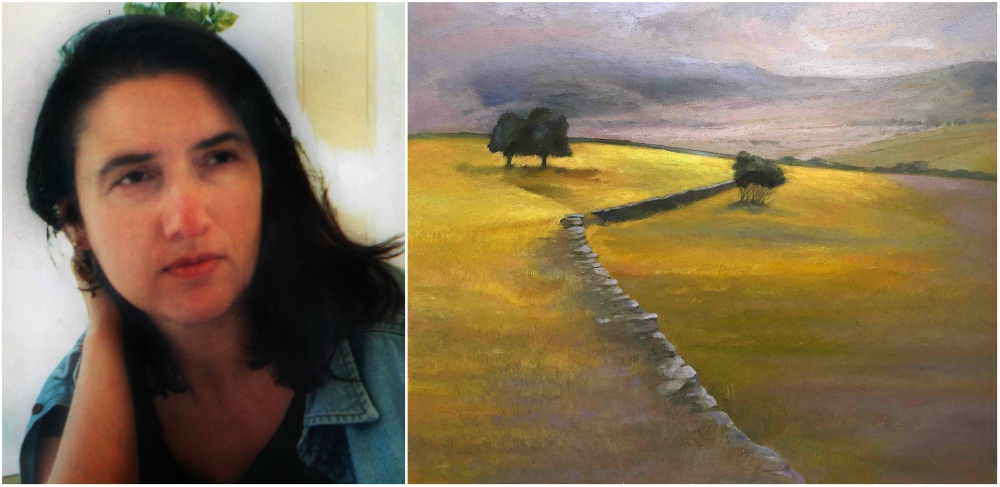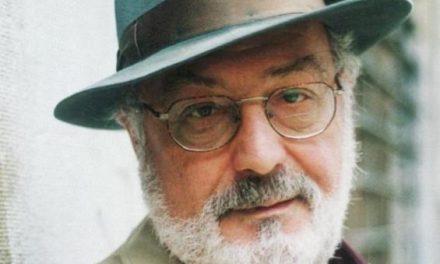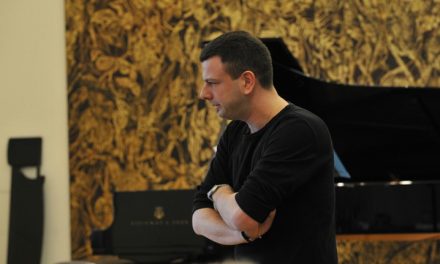Anna Grigora is an acclaimed artist, born in 1959 in Athens, Greece. She studied at the Athens School of Fine Arts. She has held 15 solo exhibitions and participated in over 150 group exhibitions in Greece and Europe. Some of her paintings belong to the museum of Vasilis and Elisa Goulandris in Andros, the Historical Archives – Museum of Hydra, Galleries of Karditsa and Messolonghi, and Viannos Gallery in Crete.
I’ve had the pleasure of knowing Anna Grigora since childhood and to share with her ideas about life and art. I met with her again after many years when she was already an established painter, notable for the brightness of her landscapes and her intimacy with nature. In our interview for Greek News Agenda, Anna Grigora explained that for her, painting is a way of life, adding that “for as long as I can remember, I have been painting without trying to communicate something; I only paint what makes me feel good”. It is probably why her landscapes attribute not only the outside world but her inner world as well, a world of beauty, harmony, kindness and morality.
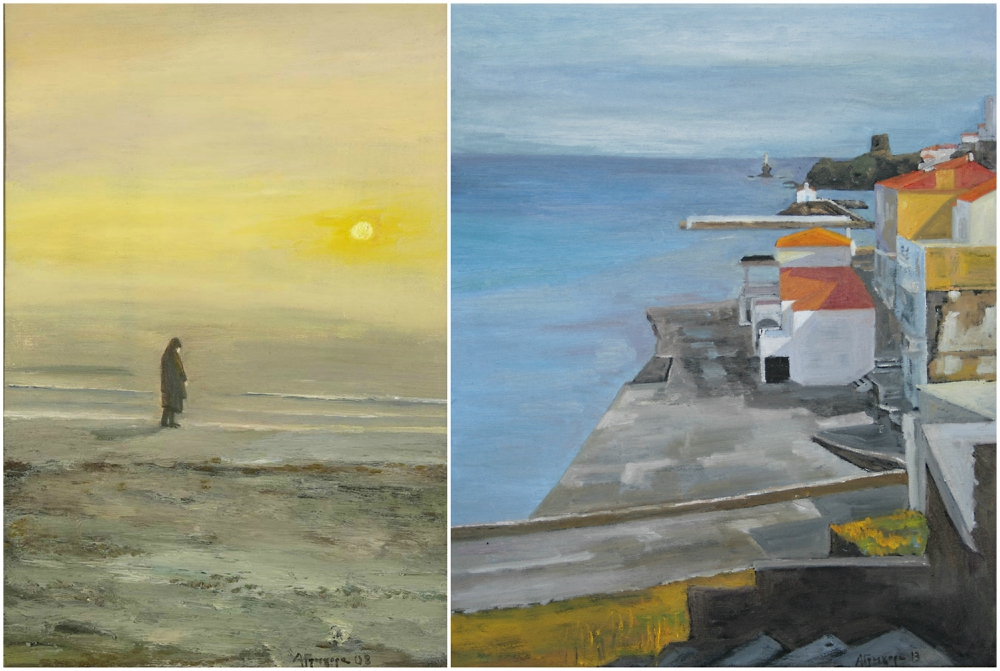 Left: Solitude, Right: Andros Landscape
Left: Solitude, Right: Andros Landscape
When I asked her why she has chosen to paint landscapes, she explained that she has grown up in nature, adding that this is the reason she sees and depicts it in her own personal way.
Anna Grigora renders landscapes simply and inwardly, removing what is unnecessary and emphasizing what highlights the delicacy and gracefulness of the subject.
Many of her works are inspired by her place of origin, the island of Andros. As she explained, “Andros is my homeland, it is the reason I paint and my inspiration. The combination of the yellow plains and the sea was what triggered me to the paint landscapes”.
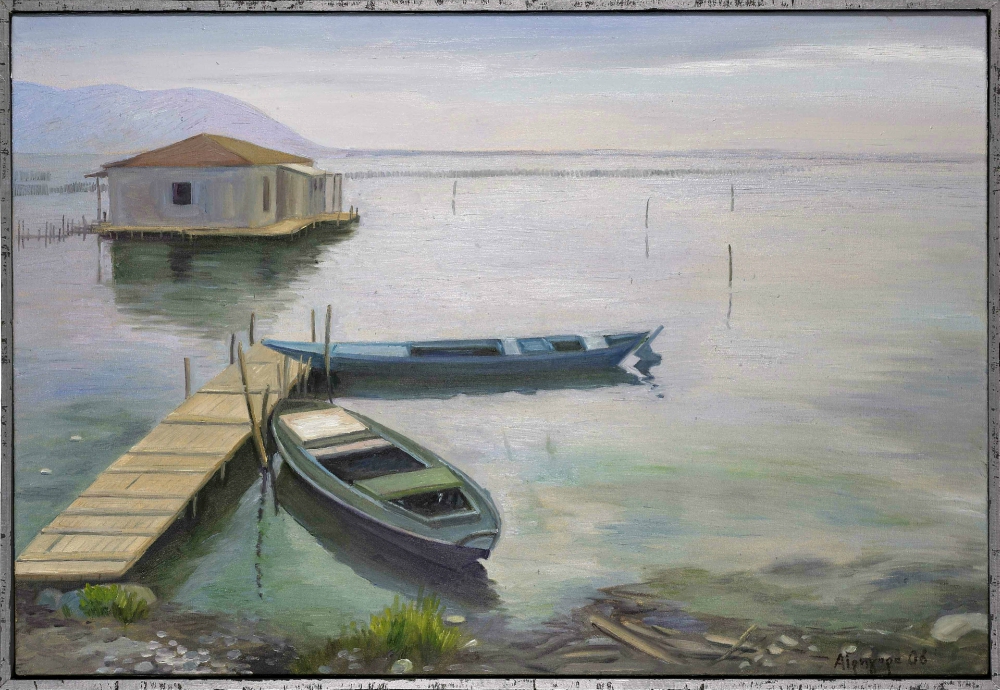 Dock
Dock
Art historian Kyriakos Koutsomallis wrote that the artist is transforming memories and the tangible relationship with beloved things that motivate her, using joyful combinations of colour and light, where “every stroke of her brush becomes a redeeming lash towards the magnificent”.
Asked whether isolation on account of the pandemic quarantine measures had a positive or negative effect on her, she noted that “seclusion did not have a negative effect on me, as it wasn’t something unfamiliar. I often pass a lot of time in solitude”. This answer reminded me of the words of Rainer Maria Rilke to a young poet who asked him for his opinion: “the work of art is born in silence and lives in an infinite loneliness. The artist has to grow slowly but steadily like a tree”. This is how Anna Grigora has been working all these years. As K. Koutsomallis commented, “she is continuously developing her artistic qualities with the same unwavering aesthetic sensitivity and honesty, with the same beauty of soul and instinct”.
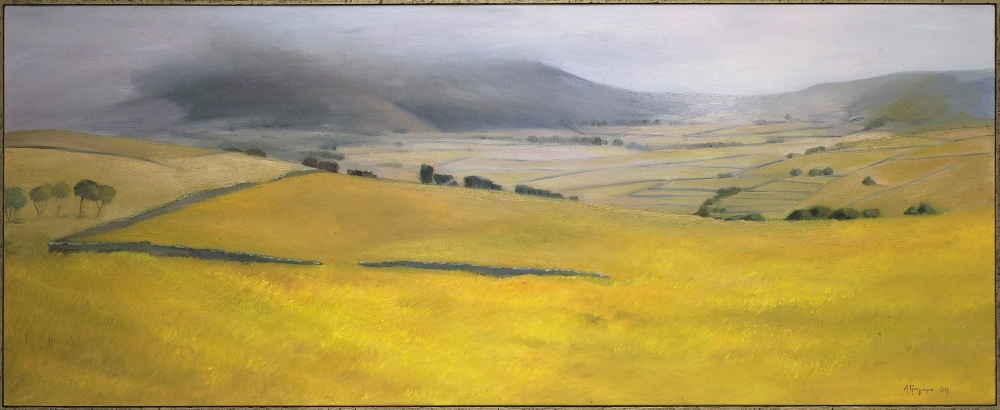 Misty meadow
Misty meadow
When I asked her how she interprets Pablo Picasso’s statement that he does not paint what he sees, but rather what he thinks, she noted that in her opinion he means that his works are the result of an intellectual processing of subjects that touched him. Anna Grigora follows a similar path: She transfers on canvas landscapes of Andros, landscapes that transmit the aura of childhood memories which hold a special value for her and following her own painting path outside group formalities, but always using diachronic, traditional techniques.
Marianna Varvarrigou (Intro image: Left, Anna Grigora. Right, Dry stone walls)
Read also via Arts in Greece: The Art of “Dancing” Through Dionisis Kavallieratos’ eyes; Artist Stavros Kotsireas: “Creativity is part of our humanity”; Painter Dimitris Tzamouranis: “Art’s ultimate objective is the pursuit of beauty”; Maria Filopoulou: an important representative of contemporary representational art in Greece; Kostis Georgiou: “Art’s purpose is to provide a zone of unlimited paths”
TAGS: ARTS

